division of Europe after World War II
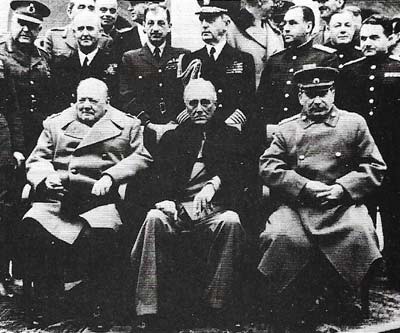
Figure 1. The three leaders of the Grand Alliance, Churchill (left), Roosevelt (center) and Stalin, met at Yalta in February 1945. France was not invited. It has often been argued that Europe was divided into two blocs at this meeting, but the "Big Three" agreed on little beyond the final arrangements necessary for temporarily dividing Germany.
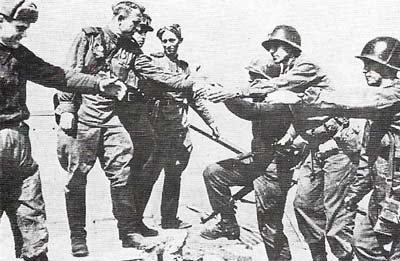
Figure 2. US and Soviet troops met at Torgau, Germany, on 15 April 1945. But already Russian resentment over delay in the Second Front, and US distrust of Soviet motives, heralded the Cold War.
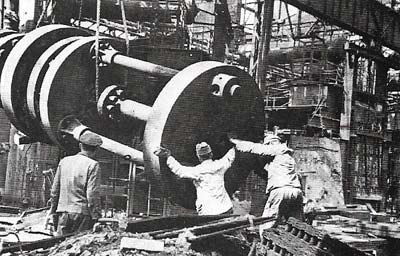
Figure 3. The Russians dismantled German industry so thoroughly that it caused hardship in the Western zones and was halted, despite the fact that the USSR's reparation claims had at first been accepted.
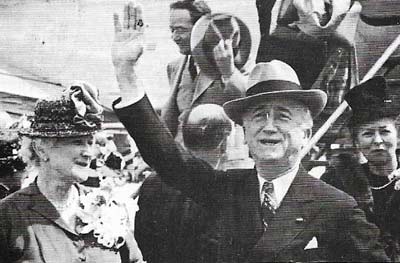
Figure 4. James Byrnes (1879-1972), the US Secretary of State, attended the 1946 Paris Conference which was to draft peace treaties with Italy, Romania, Finland, Bulgaria and Hungary. Achieving only part of its aim, the conference also showed up disagreements over Germany.
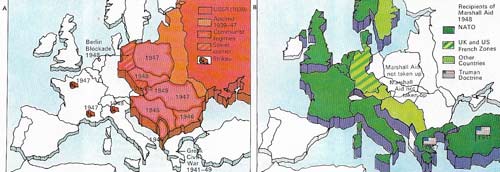
Figure 5. From the Western point of view (A) it appeared that a vast Soviet army had taken over Eastern Europe, reduced it to Stalinist rule, and was poised ready for a westward advance. From the East (B), the superior economic power of the Western world backed by American nuclear weapons seemed ready to disrupt the defensive system that the USSR was trying to create. Each seemed to be threatening the other and so the Cold War escalated.
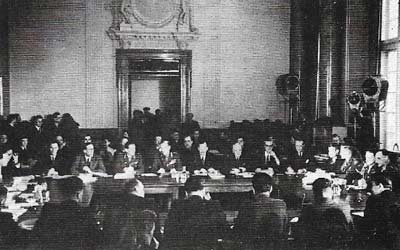
Figure 6. The Allied Control Council (shown here in 1948) governed Germany from 1945 to 1948. It did not establish a central government for the whole country, but served to resolve disagreements arising through the separate governments of the different zones. When the three Western powers decided to introduce a new currency in West Germany, the Russians walked out and the Council came to an end.
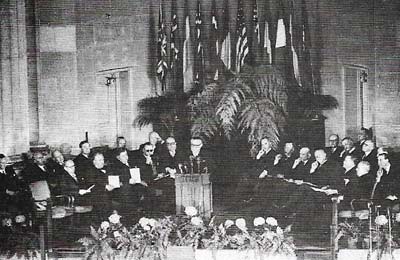
Figure 7. The foreign ministers of NATO countries gathered in Washington to sign the NATO Treaty before the Berlin blockade was over. Events in Europe had seemed to confirm the aggressive intentions of the USSR and the need for a firm Western response. Also, the economic recovery of Western Europe depended on a security guarantee. By committing the US to a long-term defense arrangement, NATO superseded European attempts to ensure security.
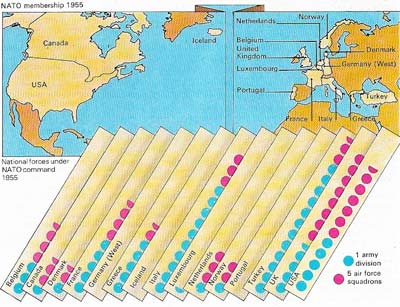
Figure 8. NATO was formed to offset the Soviet military presence in Europe. The forces committed to NATO were too weak to be anything but a stopgap in the case of an emergency until, that was, the full resources of all the signatories could be mustered. In 1955 West Germany became fully independent state and a member of NATO. In May of that year, partly in response to that event, the Soviet Union set up the equivalent defense organization of the Warsaw Pact.
The cold war is usually thought of as a global struggle between the two Great Powers that had emerged by the end of World War II. These two powers, the Soviet Union and the United States, were initially by no means equal; the United States was far superior in terms of economic capacity, air power, and in the fact that she possessed nuclear weapons 'before the Soviet Union. However, the Soviet Union had an important advantage – the ability to threaten Western Europe with the might of her army. It was because of this Soviet threat that the United States was obliged to come to the rescue and defense of the Western European countries.
East-West misunderstandings
This is the traditional view of the origins of the cold war and it derives from an interpretation whereby Stalin's Russia overran eastern Europe between 1945 and 1947 and seemed to threaten Western Europe too. Against this a different view has been suggested by some historians. They say that the USSR which had in the past been invaded many times from the West, was still afraid of her titular allies at the end of World War II. In this view, the Stalinist takeover of Eastern Europe was a defensive reaction to possible attack.
These views are contentious, but it is fairly clear that mutual misunderstanding between the Soviet Union and America played a large part in bringing about the division of Europe (Figure 5). When Churchill (1874–1965), Roosevelt (1882–1945) and Stalin (1879–1953) met at Yalta in 1945 (Figure 1), Soviet suspicion of the Western timing of a Second Front gave way to Western suspicions over Soviet intentions in the East – particularly towards Poland. Thereafter the powers failed, through a series of increasingly acrimonious conferences, to reach agreement on Germany. The process of division inevitably took over.
The division of Germany
At first the American forces had not intended to stay long in Germany. They did not expect the Soviet troops to remain either. The victorious powers were supposed to supervise German reconstruction only until they could all agree on its future as a united country. All four – through their foreign ministers, Ernest Bevin (1881–1951), Georges Bidault (1899–1983), Vyacheslav Molotov (1890–1986), and Secretary of State George Marshall (1880–1959) – administered Berlin equally. But the picture changed, partly because of Soviet dominance in Eastern Europe and in the Soviet zone of Germany, which was rapidly organized as part of the Soviet system. Also important was the Soviet reparations policy, which seemed to threaten the economic ruin of the West by leading to the total collapse of any German economy (Figure 3). Between 1946 and 1948 it became clear that a German economic revival was necessary for Western Europe's recovery.
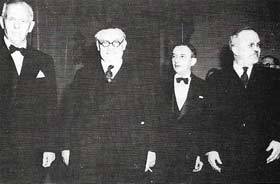 |
| Marshall, Bevin, Bidault, and Molotov made a futile attempt to agree on the German question, in 1947. |
At first the United States had hoped to include Eastern as well as Western European countries, and certainly the whole of Germany, in a vast program for European recovery based on American aid. This plan, the European Recovery Program, or "Marshall Plan" of 1947, was rejected by the Soviet Union but was still applied to the western zones of Germany. Applying it there meant the introduction of a separate and reformed West German currency.
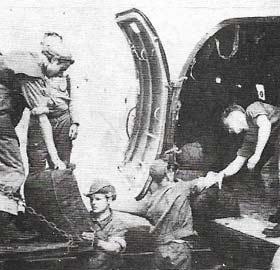 |
| The Berlin blockade was the first great confrontation of the Cold War. It arose from restrictions imposed by the Russians on Western access to Berlin. For months the city was maintained by an airlift. However, the outcome depended as much on the refusal of West Berliners to accept Soviet economic help in return for political surrender. The blockade divided Berlin and completed the division of Germany. |
After the currency reform in West Germany the USSR began the blockade of Berlin. The blockade lasted for nearly a year, from 1948 to 1949, and was a turning-point in the history of Europe. It came when the division of Europe was complete – for in February 1948 the Soviet Union had completed its take-over of the eastern countries by a coup against Czechoslovakia.
The birth of NATO
It was against this background that the decision was taken to form NATO (North Atlantic Treaty Organization) (Figure 7) – a long-term alliance by which the United States was pledged to the defense of Western Europe. The original (1949) members of NATO were the USA and Canada and the principal nations of Western Europe (Figure 8). Greece and Turkey joined in 1951 and West Germany in 1955. Meanwhile West European countries began to recover and to cooperate. They had already sketched some form of cooperation in defense (in the West European Union before NATO was founded) but equally important was the Organization for European Economic Cooperation (OEEC), formed in 1948, in which the United States supported the West European countries in creating a system of mutual prosperity. And from 1949 onwards the Europeans began to pool their resources in a system of cooperation that was eventually to form the European Economic Community.
In the east the Stalinist system of almost total control exercised through the Cominform was challenged only by Yugoslavia, although later a more c-operative pattern was established after 1949 through the Council for Mutual Economic Assistance (or COMECON). But the early contrast between Western cooperation and the Eastern dictatorship reinforced the division of Europe and the rigidity of the cold war.
Before this, in 1950, the Korean War had broken out and seemed to confirm the necessity of NATO. As a result, by 1955 West Germany was invited to join. When she did so, it meant that Germany could not be united, and the division of Europe was complete.
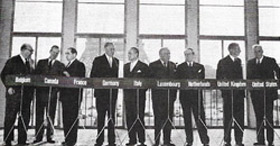 |
| By 1955 West Germany had made an amazing recovery. At Paris in 1954 the powers met to determine the extent of her entry into the European community. Konrad Adenauer (1876–1967), seen here with other leaders, had worked for this since becoming Federal Chancellor of West Germany in 1949. |
